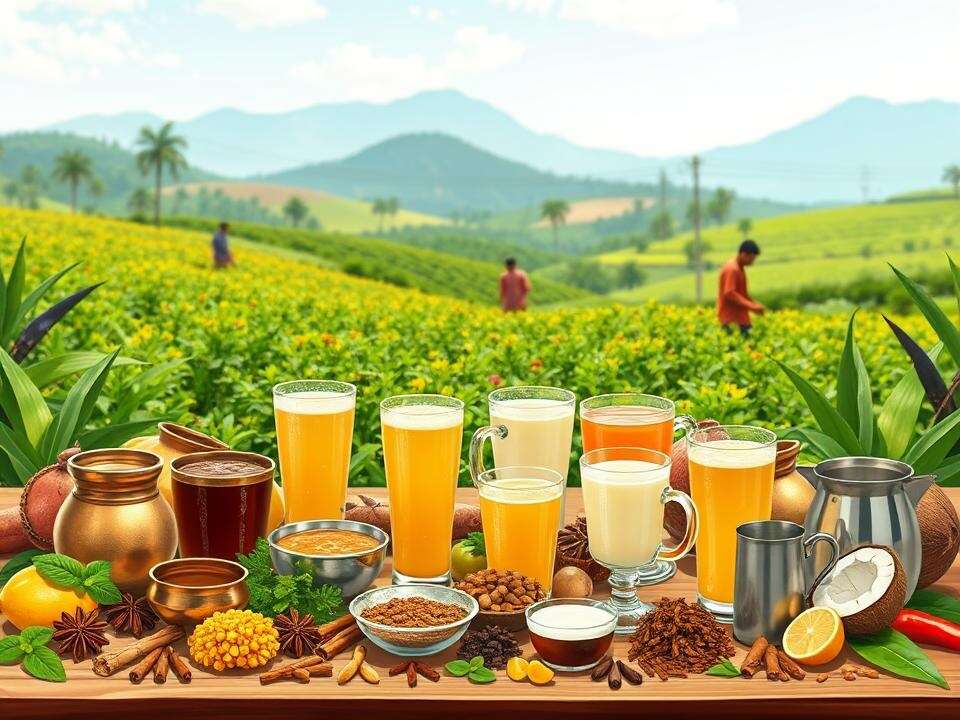- Blog
- 4 min read
From horticulture to global shelves: India’s untapped beverage export opportunity
By adopting a supportive tax policy, India can unlock its potential as a global beverage export hub. Rationalizing the tax structure would allow manufacturers to expand their offerings and introduce distinctively Indian flavors to international markets. This shift could drive economic growth, create employment across multiple sectors—including packaging, logistics, and flavor extraction—and cement India’s status as a key player in global trade.
Achieving this balance requires a robust manufacturing ecosystem, seamless cooperation between policymakers, industry leaders, and academia, and the adoption of global best practices to enhance trade performance.
The Union Budget 2025 introduced several initiatives aimed at streamlining regulations and offering exemptions to boost domestic manufacturing. However, low consumer demand has negatively impacted industries, including the FMCG sector. High GST rates and advance taxation on interest earned from mutual funds and fixed deposits have created financial strain on the middle class, thereby curtailing the virtuous cycle of manufacturing. This, in turn, has weakened MSME export potential.
Despite India's diverse product range, the country struggles to reach its 45% export target due to regulatory complexities, particularly in onboarding small businesses onto e-commerce platforms. Businesses with a turnover of less than ₹40 lakh must enroll for GST compliance upon joining such platforms, making expansion daunting. The food processing sector, especially horticulture-based exports, remains an untapped opportunity.
Rethinking Taxation to Boost Beverage Exports
Carbonated and aerated beverages in India currently face the highest GST slab of 28%, coupled with an additional 12% compensation cess, regardless of their sugar or fruit content. This places even locally popular products, such as the traditional lemon soda from street vendors, under heavy taxation when produced in a formal setting. India's domestic beverage market stands at $18.25 billion, with the country holding 44% of the global market. However, excessive taxation stifles growth and limits export potential.
Many argue that reducing these taxes and fostering closer collaboration between industry stakeholders could not only boost domestic production but also significantly enhance exports. A business-friendly tax policy could transform the beverage sector into a powerful engine for export-led growth.
The Impact of High Taxation on Industry Growth
Globally, over 105 countries impose levies on sugar-sweetened beverages (SSBs), yet India classifies them under the same tax category as "sin" products like tobacco. The 12% compensation cess, initially set to expire in 2022, has been extended until March 2026, adding further strain to the industry. Discussions of introducing an even higher slab of 35% further exacerbate concerns.
While these measures aim to curb sugar consumption, their broader impact has been counterproductive. According to an ICRIER report on the carbonated beverage industry, between FY 2018-19 and FY 2019-20, companies in this segment witnessed revenue declines and lower GST contributions. The heavy tax burden discourages innovation, hampers production, and fuels the growth of an informal market. More importantly, it prevents India from scaling up its beverage manufacturing to compete on the global stage.
Capitalizing on India's Unique Flavors for Export
Despite these challenges, India possesses natural advantages that position it as a potential beverage export powerhouse. As one of the world's largest producers of fruits and sugar, the country has an edge in sourcing key ingredients for carbonated soft drinks (CSDs). India’s horticulture production stands at approximately 351.92 million tonnes annually. However, inefficiencies in processing, storage, and logistics lead to a 25-30% wastage of this valuable produce.
This gap presents a significant opportunity to develop and export uniquely Indian CSD varieties, benefiting both farmers and manufacturers. The Agricultural and Processed Food Export Development Authority (APEDA) has set an ambitious target of $1 billion in export revenue from both alcoholic and non-alcoholic beverages. With a revised tax structure, India could leverage its agricultural strengths to create high-quality, export-oriented beverage products tailored to global markets.
This initiative aligns with Prime Minister Narendra Modi’s vision of “Make in India for the World.” While India’s technology sector has garnered global attention, the beverage industry remains an underutilized opportunity. The rising demand for Indian products among the diaspora, coupled with trade agreements with Australia, the UAE, and ongoing negotiations with the UK and Qatar, provides an ideal environment for Indian CSDs to establish a global presence.
Policy Reforms: The Path to an Export-Driven Beverage Industry
Globally, smart tax policies have been instrumental in driving innovation. The UK’s sugar levy led to widespread product reformulation, significantly reducing sugar content. Similarly, Poland and Colombia saw voluntary reformulations ahead of anticipated tax changes. Countries like Thailand and the Philippines have successfully developed strong beverage manufacturing and export ecosystems through strategic taxation policies.
India now has an opportunity to follow suit. By adopting a supportive tax policy, the country can unlock its potential as a global beverage export hub. Rationalizing the tax structure would allow manufacturers to expand their offerings and introduce distinctively Indian flavors to international markets. This shift could drive economic growth, create employment across multiple sectors—including packaging, logistics, and flavor extraction—and cement India’s status as a key player in global trade.
With the right policy framework, India can transform its beverage industry into a vibrant and dynamic sector, leveraging its agricultural strengths, embracing innovation, and achieving global export excellence.
(The author is IAS officer-retired, former Secretary; Views expressed are personal)




COMMENTS
All Comments
By commenting, you agree to the Prohibited Content Policy
PostBy commenting, you agree to the Prohibited Content Policy
Post